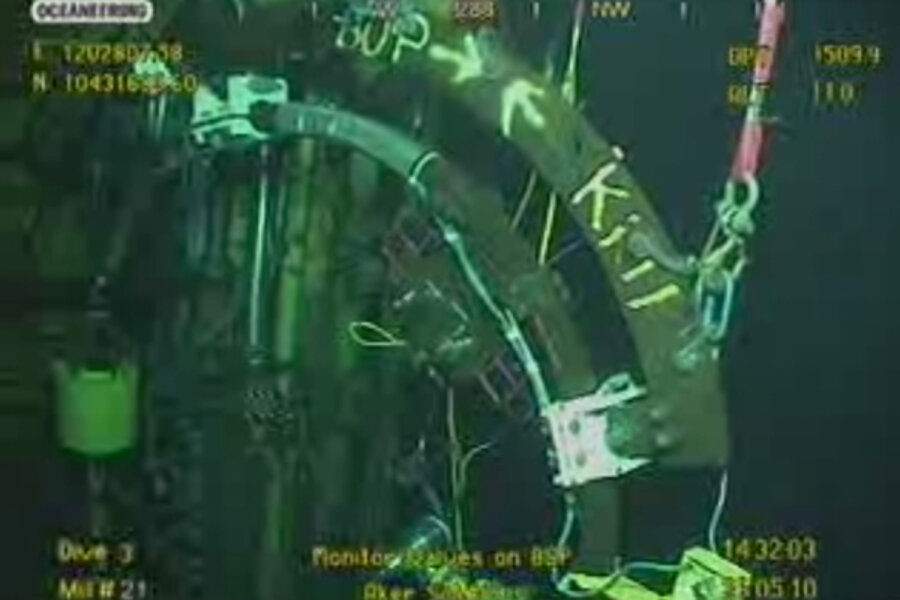Oil spill 'top kill': why it takes 24 hours to know if it's working
Loading...
Eight hours into the oil spill “top kill” operation, a BP official said Wednesday night that it was too soon to tell if it would work. BP Chief Operating Officer Doug Suttles said he expected to know if the plan was working within 24 hours.
“Top kill,” which has been described as one of the most elaborately staged and far-reaching maneuvers to stop oil from gushing into the Gulf of Mexico, was put into action at 2 p.m. Eastern time and was being tracked with a live video feed.
The reason for the long wait is the physics involved. In "top kill,” BP is attempting to pump so much drilling mud into the blowout preventer that it actually reverses the flow of material, pushing the oil back down the well. To be successful, it needs to push the oil three miles backward into its subterranean reservoir before the well can be capped with cement. That takes time.
But BP officials said Wednesday night that the effort was so far progressing according to plan, pumping drilling mud into the blowout preventer at the expected rate – roughly 40 to 50 barrels per minute.
Mr. Suttles said “top kill” was not attempted during the first month of the spill because the company needed to know if crucial parts of the blowout preventer were still operational. In addition, scientists could not devise a plausible solution before they had collected data about the leak.
Both of these processes took more than a month because of the difficulties of operating at sea depths of 5,000 feet, Suttles said.
Suttles also said BP would continue to try to stop the leak if "top kill" didn't work, perhaps trying to put a second blowout preventer on the well.
Throughout the day Wednesday, experts and laypeople alike examined the live video feeds of the leak in hopes of drawing clues. The Associated Press reported late Wednesday that the oil plume was turning from medium gray to black, which may suggest the leak is shifting from a combination of oil and gas to just oil – which would mean that oil is escaping at a higher volume, according to Bob Bea, a leading oil engineering expert at the University of California at Berkeley.
Another scientist, Manhar Dhanak of the Institute for Ocean and Systems Engineering in Boca Raton, Fla., was concerned about the state of the blowout preventer. If it is damaged, the rate of oil could greatly increase.
“Rather than helping, it could create more problems,” Mr. Dhanak says.
But BP chief executive Tony Hayward warned against reading too much into the live feed images: "All I can say is it is unlikely to give us any real indication of what is going on,” he said, according to AP. “Either increases or decreases are not an indicator of either success or failure at this time."
Related:





